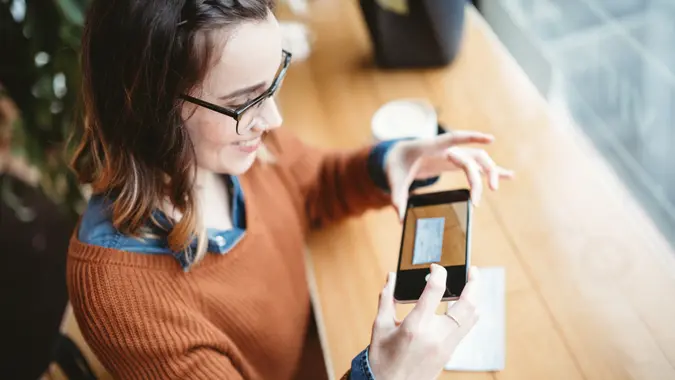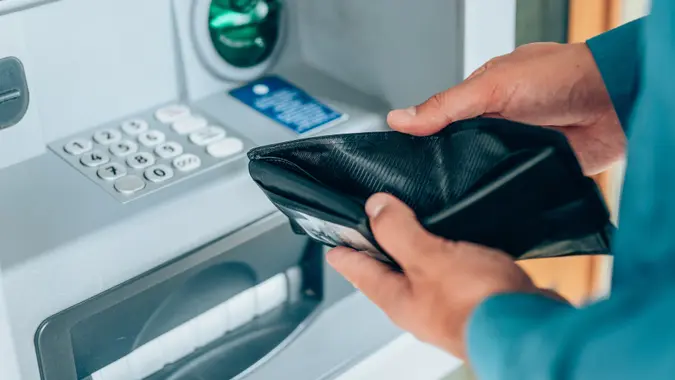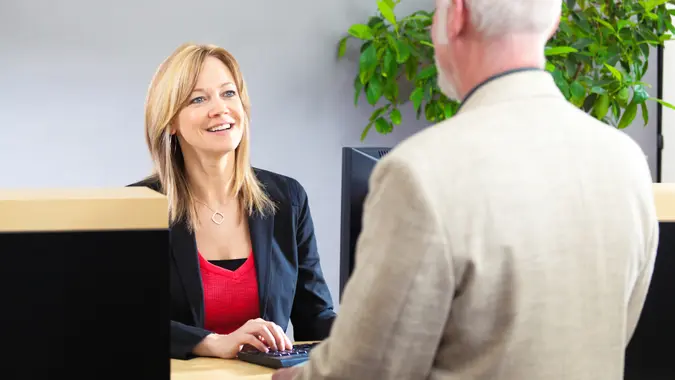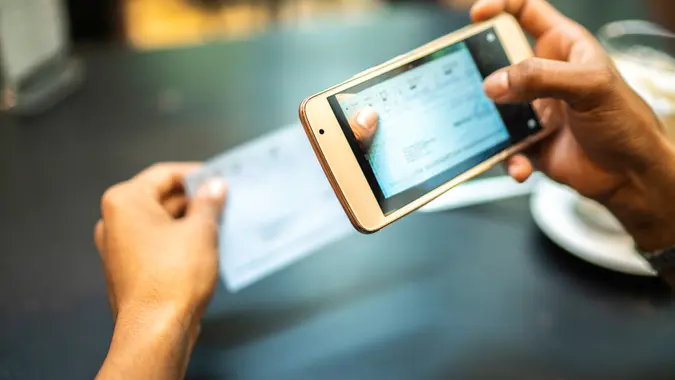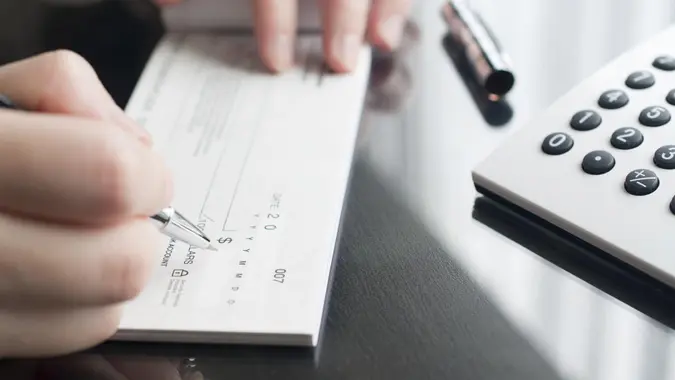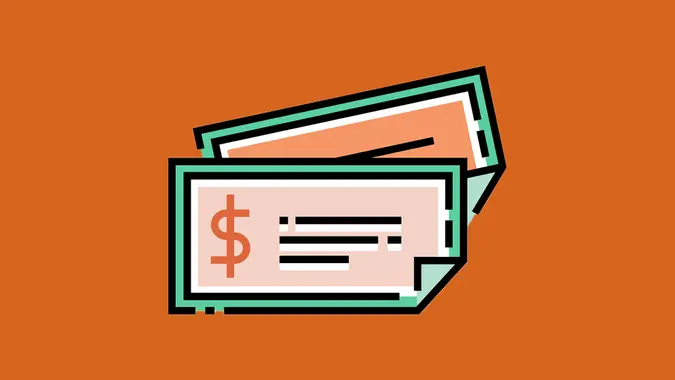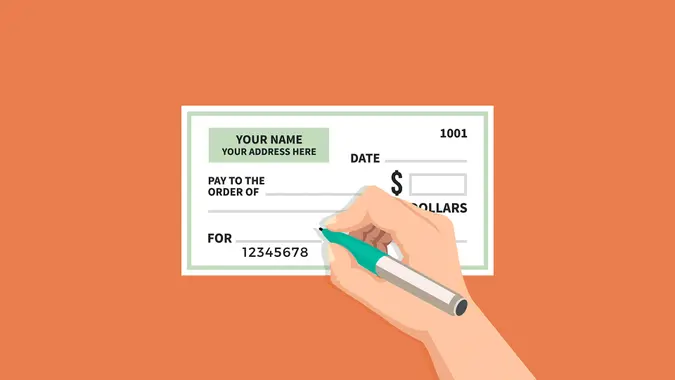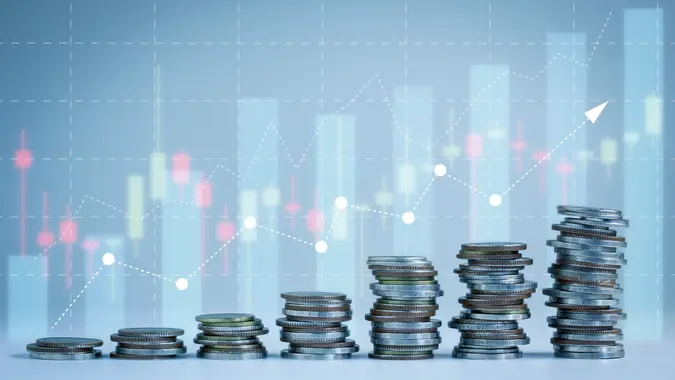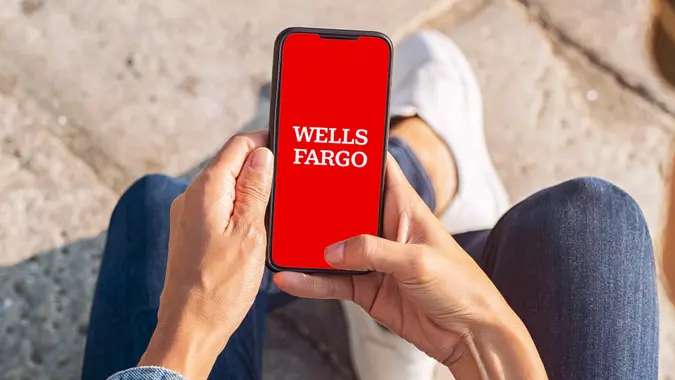What Is an E-Check? Here’s What You Need To Know

Commitment to Our Readers
GOBankingRates' editorial team is committed to bringing you unbiased reviews and information. We use data-driven methodologies to evaluate financial products and services - our reviews and ratings are not influenced by advertisers. You can read more about our editorial guidelines and our products and services review methodology.

20 Years
Helping You Live Richer

Reviewed
by Experts

Trusted by
Millions of Readers
An appealing alternative to paper checks is an e-checking account, which allows an account holder to pay electronically, either through money transfers or debit card payments. Keep reading to learn more about how e-checks and e-checking accounts work.
What Is an E-Check?
Similar to a paper check, an e-check is a way to send money or pay for goods and services, only electronically. Many people in the U.S. use e-checks as an alternative form of payment to credit and debit cards.
When you pay or send money with an e-check, the funds are automatically transferred directly from your bank account to the bank account of the recipient. E-check transactions are secure and encrypted, so you shouldn’t need to worry about someone stealing your banking information from an e-check transaction.
What Is an E-Checking Account?
An e-checking account is like a regular checking account, but without paper checks. Payments are made using e-checks through the ACH network, which is used by most U.S. financial institutions.
How Do E-Checks Work?
Here is everything you need to know about sending and receiving e-checks.
Sending E-Checks: Step by Step
- You use either a debit card or fill out the e-check payment form you received — including the routing number and account number — to allow the transfer of funds electronically.
- Then, you click “submit” on the form, and the payment is authorized.
- The funds in your account will be verified, which can take 3-5 business days but often takes less.
- Lastly, the payment is transferred.
Receiving E-Checks
There are no specific steps for receiving an e-check. Unlike with a paper check, you do not need to cash an e-check. Instead, the money is automatically deposited in your account once it has been processed through the ACH network. If you were supposed to receive an e-check and more than five business days have already passed, you can contact either your bank or the e-check sender for more information.
Is It Safe To Pay With an E-Check?
Some people might be leery of sending payments online, but these payments are regulated, and you’re not handing over a piece of paper with your name, address and bank account number. In many ways, it’s more secure than a traditional paper check.
Are E-Checks Better Than Paper Checks?
With e-checks, payments happen faster than with paper checks, which is a bonus for both parties in a transaction. ACH processing also can reduce costs by up to 60%. E-checking accounts are better for the environment as well, with less paper used, and therefore fewer trees.
Financial institutions also like e-checking accounts. They cost less to administer — much less to process — and are faster. Banks such as U.S. Bank offer e-checking for free, as opposed to charging for checking accounts.
Are There Any Disadvantages?
It’s much harder to give an e-check as a gift — you can’t stuff one in an envelope and leave it under the Christmas tree. But be creative and include the amount in the envelope, and then simply transfer the money on the next business day. Remember, e-checks are processed by financial institutions, so they won’t operate on Federal holidays.
Some also might consider the faster processing times as a negative, if you’re writing a check for more than you have in your account. Banks will still charge fees for e-checks that overdraw an account.
Final Take
E-checks are a great alternative to physically carrying around paper checks. They are usually faster than payments with paper checks and financial institutions often have mobile apps that have features to make this process even easier.
FAQ
Here are the answers to some of the most frequently asked questions about e-checks.- Can you cancel an e-check?
- If the payment has already been processed, then you can't cancel it. This is because the money has already arrived in your recipient's account. If the payment hasn't been processed yet, reach out to your financial institution.
- Do e-checks cost money?
- Institutions will charge a small processing fee to merchants, usually between $0.30 and $1.50. QuickBooks charges 1%, up to a maximum of $10. But e-checks are usually free to payers.
- How long does an e-check take to clear?
- When you submit a transaction through an e-check, it goes through the Automated Clearing House network to be processed. This can take 3-5 business days at most.
George Malone contributed to the reporting for this article.
Our in-house research team and on-site financial experts work together to create content that’s accurate, impartial, and up to date. We fact-check every single statistic, quote and fact using trusted primary resources to make sure the information we provide is correct. You can learn more about GOBankingRates’ processes and standards in our editorial policy.
- Bureau of the Fiscal Service. "Direct Deposit (Electronic Funds Transfer)."
- Bureau of the Fiscal Service. "Automated Clearing House"
- CNN. 2020. "It's OK if you've used your phone too much this year."
- QuickBooks. "Process ACH Payments | Pay with eChecks in QuickBooks."
- NAHB. "Electronic Check."
 Written by
Written by  Edited by
Edited by 






